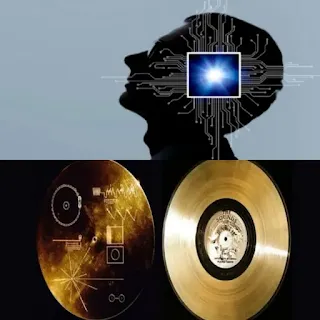Scientists have developed the world's first mind-reading artificial intelligence, which translates brainwaves into readable text.
It works using a helmet covered with a sensor that monitors specific electrical activity in the brain while the wearer is thinking, and converts it into words.
A team from the University of Technology Sydney created this revolutionary technology and said it could revolutionize the care of patients who have become mute due to stroke or paralysis.
An illustrative video shows a person thinking about a sentence displayed on the screen, which is then transformed into what the AI model has decoded, and the results are almost exactly identical.
The team also believes the innovation will allow seamless control of devices, such as electronic limbs and robots, allowing humans to give directions simply by thinking about them.
"This research represents a pioneering effort at translating raw EEG waves directly into language," said lead researcher Professor CT Lin.
Previous technology to translate brain signals into language required either surgery to implant electrodes in the brain, such as Elon Musk's Neuralink, or scanning using an MRI machine, which is expensive and difficult to use in everyday life.
However, new technology uses a simple helmet over the head to read what a person is thinking.
To test the technology, Lin and his team conducted experiments with 29 participants who were shown a sentence or phrase on a screen and had to think about reading it.
The AI model then displayed what it had interpreted from the participant's brainwaves.
The team indicated that the accuracy of the translation currently stands at about 40%, but it is continuing its work to enhance this percentage to 90%.
Humans send Earth identification records to aliens
The Voyager spacecraft held a glimpse of humanity's deepest desires: the golden records.
Voyager's golden logs were a message in a bottle to any other intelligent beings that might stumble upon them.
The Golden Records contain sounds and images that summarize aspects of life on Earth. It is a time capsule containing natural sounds of Earth's weather and wildlife, and humans speaking 55 different languages. It also contains a large variety of images, including the structure of DNA.
The Voyager mission has now left the solar system behind, launching into interstellar space.
But this does not mean that the effort is wasted. In fact, some people are already thinking about what we can put on the next message in a bottle (MIAB) that we send out into the wide universe.
In a research article published in the journal AGU Earth and Space Science, a team of researchers investigated what MIAB should look like.
“These records not only provide a snapshot of Earth and human civilization, but also represent our desire to establish contact with advanced alien civilizations,” the researchers wrote. “Our goal is to share our collective knowledge, passions, innovations, and aspirations in a way that provides a global, yet contextually relevant, understanding of human society and the evolution of Life on Earth, and our hopes and concerns about the future.
The article outlines some of the rationales for sending more MIABs into space, and the kinds of fates that await them, including drifting forever through empty space. The researchers then moved on to the central question: What should we put in the time capsule?
They wrote that some of the content of the original record was so well thought out that it could be modified and used again if updated to reflect current technology and times.
But some content and messages contain flaws and difficulties that need to be corrected.
The team proposes a two-part message: a scroll containing simple pictures illustrating basic information about humanity and Earth, and a small computer that could contain vast amounts of digital information.
And for the advanced recipient, one of the main things is to tell them where we are in this vast galaxy and universe. This can be done through an image of some of the brightest objects in the galaxy and our position in relation to them.
Given the changing nature of the universe, our interpretation of where we came from depends on the recipient knowing the launch date.
The researchers explain: “In general, given the evolution of the infrastructure in the galaxy, it is important to determine the design and launch time of the proposed location map. Otherwise, although future life may succeed in decoding the map, it will not necessarily understand the timeline of human existence, and as a result Therefore, it will not be able to show the galactic scenario at a specific time in the past.”
This paper is the first in a series discussing what should happen in the new golden registries.
The researchers believe we should show any recipient the long history of life on Earth. We must show some gloom, like our terrible wars. But we must show our victories.
“Our scientific achievements, such as splitting the atom and space exploration, fall within this description, along with examples of the wide range of cultures and knowledge that make up the complex human fabric,” they wrote.
They explained that humanity is at a stage of development where we can easily imagine how we would become extinct. Plans to reach the future and other intelligences are an important part that helps us face our uncertain future.


Good
ReplyDelete